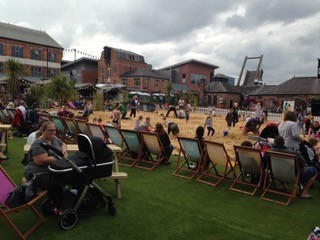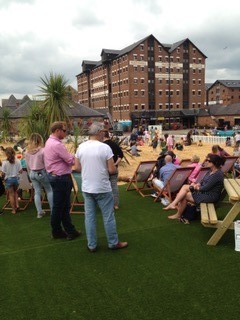
From bumping spaces to sticky places
In a recent blog, my colleague Kat Gibson wrote about her role as a Community Builder in Gloucester and how she seeks to listen to residents to help them fulfil their dreams in their community. In her blog she describes how she seeks out people to hear their aspirations for where they live.
“I ‘hang out’ in what I call the bumping spaces – parks, benches, outside shops and the like: places where people bump into one another and end up in conversation – and chat with people. I find out what it is that people are interested in; what people love doing or would love to learn to do. I find out what people love about their community and what people would love to see happening there which isn’t already in place.”
These bumping places are critical for community life to thrive. They are the places we meet our neighbours and form relationships with each other within our communities.
I found myself thinking more about these sorts of spaces when I met Gilbert Rochecouste, Founder of Village Well. He shared some of his work from Australia where he has been supporting communities to create ‘sticky places’. Similar to bumping spaces, these are places people gather to be with each other – the sort of place you are enjoying yourself so much you don’t want to leave! There are lots of examples of these across from across the world including pop-up parks to street markets and public art projects. There’s a great example in Gloucester where a pop up beach has recently been created.

Through creating a public spaces where people can play and be creative we can change how we relate to each other.

Creating sticky places doesn’t have to be big or expensive though. Gilbert suggests there are actions we can take to create more sticky places where we live through small acts of neighbourliness, such as taking care to plant some boxes of flowers or placing a seat outside our homes. These actions create reasons for neighbours to stop and talk to each other. Such small acts can help us reclaim our streets and places for deep community interaction.
Whilst the spaces themselves are important, we should perhaps not see them as the end product, but rather a means to an end. With the end goal being deeper relationships with our neighbours and a greater sense of ownership of our communities.
You can read Kat’s full blog on the You’re Welcome website http://www.yourewelcome.to/gloucestershire/you-just-seem-to-sit-and-have-coffee-with-people
Listen to Richard’s conversation with Gilbert at https://soundcloud.com/user-504208880-624251812/abcd-goa-gilbert-rochecouste